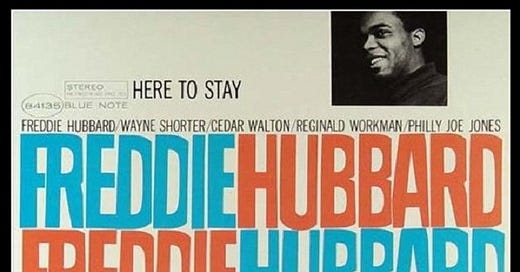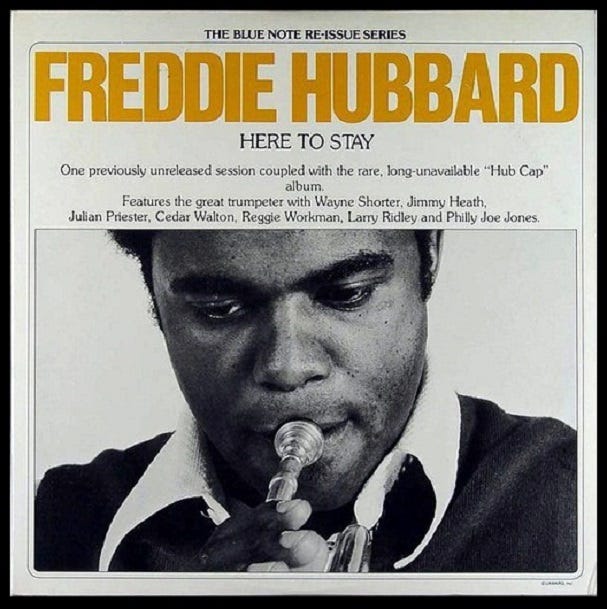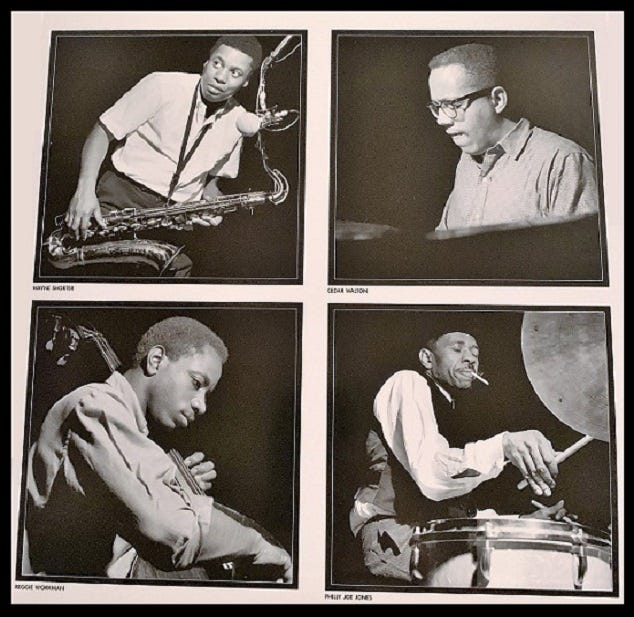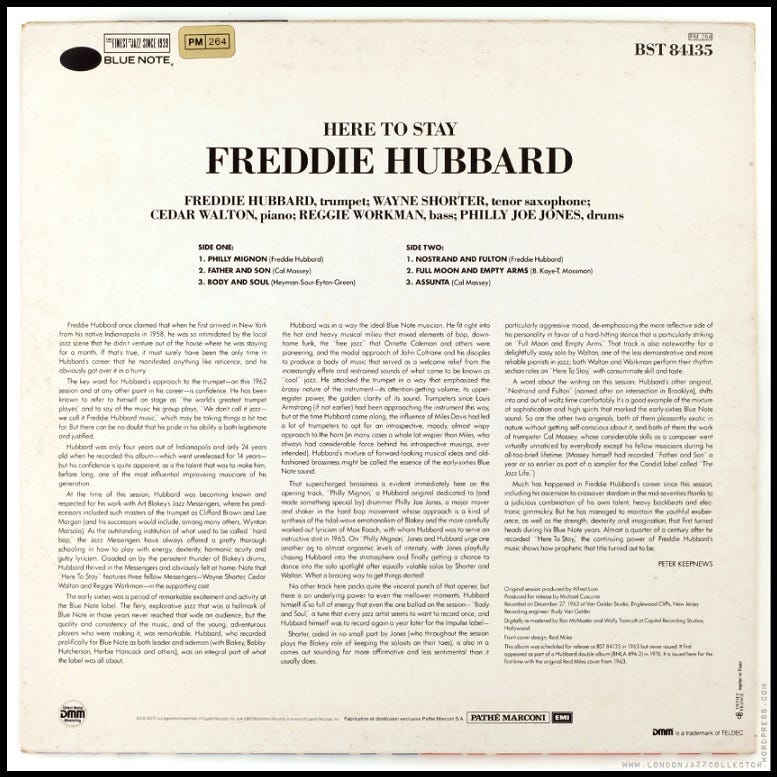Freddie Hubbard – Nostrand and Fulton (recorded December 27, 1962)
This stellar jam was written by Hubbard with an all-star lineup of Wayne Shorter, Cedar Walton, Reggie Workman, and "Philly Joe" Jones, but remained unreleased until 1976.
View most updated version of this post on Substack.
On December 27, 1962, the great trumpeter Freddie Hubbard was at Van Gelder Studio in Englewood Cliffs, New Jersey, recording his Blue Note LP Here To Stay, which sadly remained unreleased until 1976.
He was joined in the studio that day by an all-star lineup. It featured Wayne Shorter on tenor sax, Cedar Walton on piano, former John Coltrane quartet bassist Reggie Workman, and former Miles Davis quintet and Bill Evans trio member “Philly Joe” Jones on drums, who Davis and Evans both considered to be their all-time favorite drummer.
At the time, all the players except Jones were members of Art Blakey’s Jazz Messengers. Hubbard had joined the band the previous year in 1961, replacing trumpeter Lee Morgan after he departed due to his heroin addiction.
By December, 1962, Hubbard had already recorded five albums for Blue Note, beginning with his 1960 debut LP Open Sesame. His most recently released album for the label had been Ready for Freddie, issued in April, 1962. On October 10, he had been at another Blue Note recording session at Van Gelder Studio, when he recorded what would become his 1963 Hub-Tones LP with Workman, James Spaulding, Clifford Jarvis, and Herbie Hancock.
His prolific output may have been one reason why this session was not released in the early sixties. It finally saw the light of day in 1976 on a double album that was part of Blue Note’s reissue series, and also included Hubbard’s rare 1961 Hub Cap LP.
The session’s masterpiece was arguably one of the two compositions written by Hubbard, the superb jam “Nostrand and Fulton.”
It was named for the busy intersection in Brooklyn’s Bed-Stuy neighborhood, a spot also immortalized in the 1958 painting Fulton and Nostrand by the legendary artist Jacob Lawrence.
The session was produced by Blue Note founder Alfred Lion. Here To Stay was actually scheduled for release as BST 84135 in 1963, but ultimately did not come out. When it was re-issued again in 1985, the album’s original proposed artwork was resurrected, a Pop Art repetition of Hubbard’s name.
Another possible reason for the album remaining unreleased was that two of its compositions (“Father and Son” and “Assunta”) were by the trumpeter and composer Calvin “Cal” Massey, a radical Black activist who only released one album under his own name during his career because his uncompromising, militant ideology got him blacklisted from major record labels.
Hubbard and Workman had previously played on a Massey composition during the spring of 1961. Hubbard was a guest musician in John Coltrane’s expanded band (in which Workman was then the full-time bassist) for the Africa/Brass recording sessions. On May 23 they recorded the stellar Massey-penned “The Damned Don’t Cry.” However, it was not included on the final Africa/Brass album which came out in September, 1961. The track remained unreleased until it was finally included on the 1979 Impulse!/MCA compilation The Mastery Of John Coltrane / Vol. IV “Trane's Modes.”
One more of Here To Stay’s highlights was the beautiful ballad “Body And Soul.” A jazz standard, it was co-written in 1930 by Johnny Green with lyrics by Frank Eyton, Edward Heyman, and Robert Sour.
#jazz #BlueNote #HereToStay #CalMassey #FreddieHubbard










